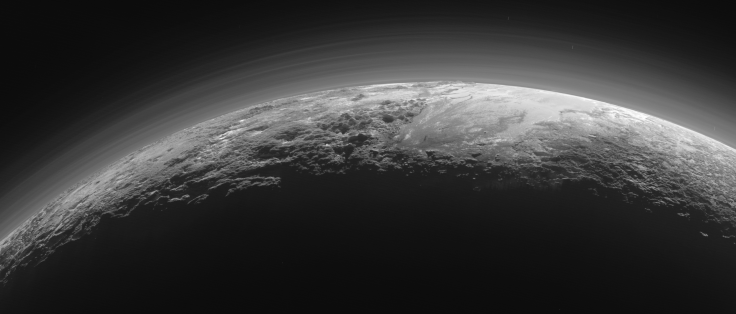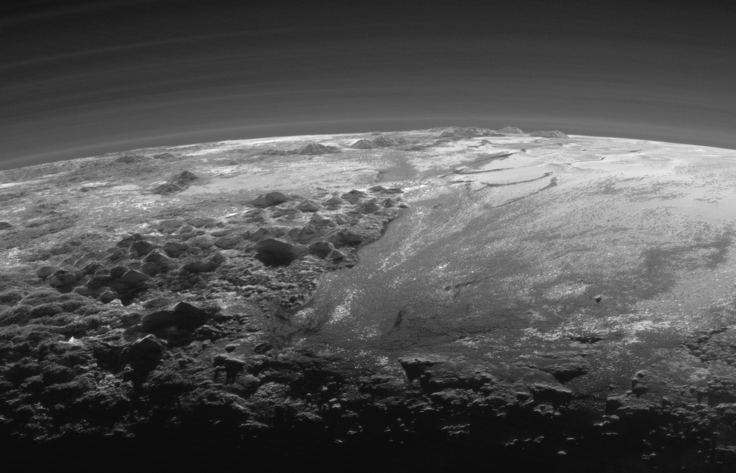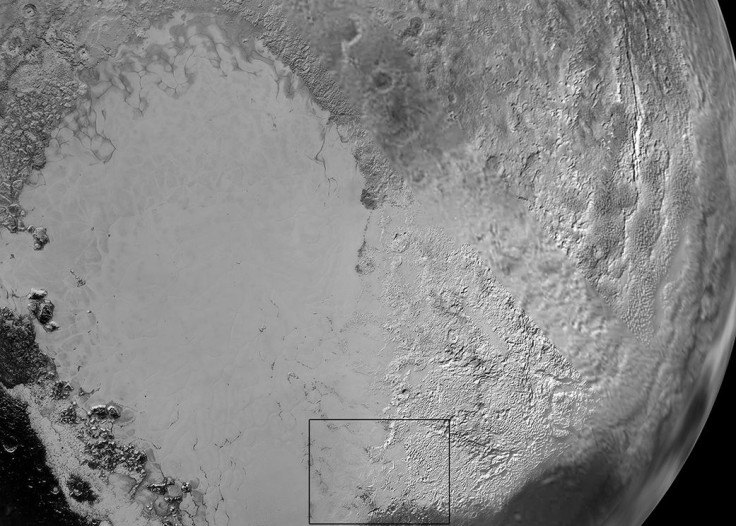NASA Reveals Beautiful, Hazy Pluto In Latest New Horizon Photos

New Horizons continues to reveal new surprises on Pluto. In the latest round of photos downlinked to NASA on Sept. 13, Pluto's hazy atmosphere is beautifully backlit by the sun. The dwarf planet's surface features are shown in great detail in the photos released Thursday.
Pluto's backlit panorama covers an area of 780 miles in stunning detail. Pluto's ice mountains, frozen planes and distorted features are highlights of the latest images. "This image really makes you feel you are there, at Pluto, surveying the landscape for yourself,” Alan Stern, New Horizons Principal Investigator, said in a statement. “But this image is also a scientific bonanza, revealing new details about Pluto’s atmosphere, mountains, glaciers and plains."

New Horizons is more than 77 million kilometers (close to 48 million miles) from the dwarf planet, but it's science mission is far from over. The spacecraft is sending data back to Earth from its scientific instruments and onboard cameras. NASA is busy analyzing the information collected by New Horizons' scientific instruments and onboard cameras.
In addition to being beautiful, the photos reveal new aspects of what it's like on Pluto. Shadows from the setting sun reveal near-surface haze indicating daily weather changes on the dwarf planet. The photos also reveal an "Earth-like" hydrological cycle -- where water evaporates and becomes precipitation again and again -- playing out on Pluto. Instead of water, it's frozen nitrogen.

Previous photos showed off Pluto's varied and complex surface. There could be dunes -- which could indicate wind -- on the dwarf planet, ice plains, ice flows, craters and several mountain ranges. Pluto's moons continue to surprise and delight researchers. There's a dark area in Charon's north pole that remains a mystery. Pluto's small moons Nix and Hydra were also seen for the first time in a previous photo series.



© Copyright IBTimes 2025. All rights reserved.





















